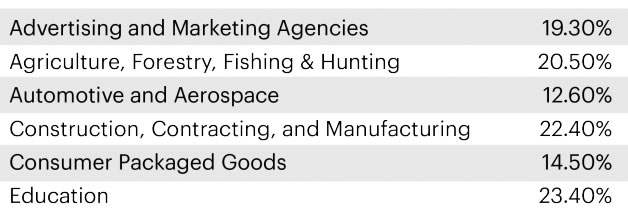Every online store owner can relate to the crushing silence of an empty cart. That drifting silence that follows a browsing spree, promising but ultimately unconverted. But what if those abandoned carts could talk—or better yet, ring the sales bell? This is the story of how one entrepreneur turned digital disappointment into sweet, resonating cha-chings through the art of the abandoned cart message.
TL;DR
Abandoned cart messages are a game-changer for online retailers. Through witty copy, strategic timing, and gentle nudges, merchants can turn lost sales into loyal customers. This article explores one business owner’s journey from hopeless cart deserts to revenue recoveries using abandoned cart strategies. You’ll also find helpful tips and FAQs to jumpstart your own recovery campaigns.
That Painful Pattern of Abandoned Carts
Before the magic of recovery campaigns, cart abandonment felt like heartbreak in slow motion. Potential customers would spend time browsing, seeming interested, and then *poof*—they’d vanish pre-checkout. It wasn’t laziness; it was human nature. Distractions happen. Second thoughts creep in. Sometimes shipping costs are just emotionally devastating.

For this particular business owner, the pattern was clear. Analytics told the story like a mystery novel: users would browse for 15-20 minutes, add products, and then disappear at the point of purchase. No notes. No explanations. Just digital ghosts in the analytics machine.
The Aha! Moment
Everything changed during a late-night digital marketing binge after reading about e-commerce automation. Enter the concept of abandoned cart messages—automated emails or texts triggered by a shopper leaving items in their cart without checking out.
“It sounded almost too good to be true,” the owner recalls. “Like catching fish that had already swum away. But I had nothing to lose.” So began the saga of crafting uniquely tailored abandoned cart messages—starting with trial-and-error emails and evolving into full-blown, strategic outreach systems.
Creating the Perfect Cart Message
Not all messages are made equal. Through experimentation, the owner discovered that the key to conversion wasn’t pressure, but personality. These are the elements that transformed their abandoned cart messages from ignorable to irresistible:
- Timing is everything: The first message went out within an hour of abandonment. A follow-up 24 hours later. A final nudge at the 72-hour mark.
- Tone over transaction: Instead of saying “BUY NOW,” the messages said “Forgot something?” or “Your cart’s still waiting :)”
- Incentives work: A small discount or free shipping often acted as the extra push consumers needed.
- Personalization wins: Using the customer’s name and listing items left behind makes the message feel specifically written for them.
Sample subject lines that got the most clicks?
- “We saved your cart for you, {FirstName} 🌟”
- “Uh-oh, did life distract you? Here’s 10% off to say come back!”
- “Still thinking it over? Let us help you decide.”
From Message to Money
Within the first month of implementing a basic abandoned cart email sequence, the store owner saw a recovery rate of 17%. By the second month, with some A/B testing and personalization tweaks, that number jumped to 24%. This translated into thousands of dollars in otherwise lost revenue.

“I remember the first recovered cart notification,” they say. “It was a small order, maybe $38. But it felt monumental. Like the Internet whispered that maybe it’s not such a deserted place after all.”
The Psychology Behind Cart Recovery
Understanding why abandoned messages work is just as important as knowing how to use them.
- Loss Aversion: People hate losing more than they love gaining. A reminder of what they’re leaving behind plays into this instinct.
- Commitment Bias: They’ve already picked the items, added to cart, and almost bought. A little nudge helps them continue down the path they started.
- Lazy Excuse-Busting: Sometimes, people just need their problems solved—“Click here, we’ve held your cart. Plus, here’s free shipping.” Done.
From Good to Great: Message Upgrades
After nailing the basics, the entrepreneur began experimenting further:
- SMS cart nudges: Brief texts with direct links had higher open rates but needed to be snappy and respectful of the user’s time and preferences.
- Retargeting ads: Display ads reminding users of their cart items on social platforms worked as a quieter form of follow-up.
- Dynamic cart rebuilds: Allowing customers to restore their abandoned cart in one click gave them a seamless path to payment.
Lessons, Laughs, and Love
Over time, what started as a cynical attempt at recovery became a sort of digital love language. These messages weren’t just about making a sale—they were about reconnecting with humans distracted by life, signals lost in the noise of the web. The emails became conversations. The math turned magical.
“Now I don’t dread hearing the sad ping of an abandoned cart,” says the business owner. “I know it’s an opportunity—one we now seize with care, charm, and yes, a little bit of humor.”
FAQs About Abandoned Cart Messages
-
Q: How soon after a cart is abandoned should I send a message?
A: Send the first message within an hour to re-engage while the purchase intent is still high. -
Q: Should I include discounts in abandoned cart messages?
A: It’s optional, but including a small, timed discount can significantly improve recovery rates without hurting margins too much. -
Q: Do abandoned cart messages annoy customers?
A: Not if done correctly. Use friendly language, clear opt-out options, and limit the follow-ups to 2–3 messages. -
Q: Are SMS messages better than emails?
A: SMS has higher open rates but should be used sparingly to avoid feeling intrusive. Email is better for detailed messages or product carousels. -
Q: Can I personalize abandoned cart messages easily?
A: Yes. Most e-commerce platforms offer tools that pull in names, product thumbnails, and prices automatically.
Whether you’re just getting started or refining your recovery strategy, remember—it’s not just about reconverting a customer. It’s about making sure your shop doesn’t become just another forgotten tab in the browser of life.
Empty carts are inevitable. Recovery is optional. Choose wisely.